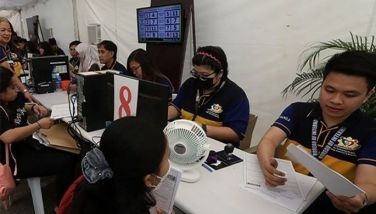Biochar technology for mine rehab
Nickel mining companies Marcventures Mining and Development Corp. (MMDC) and Benguetcorp Nickel Mines Inc. (BNMI) have been given the green light by the Department of Environment and Natural Resources to engage in a mine rehabilitation project using activated biochar technology. According to Marcventures vice chairman Isidro “Butch” Alcantara, the project is not only in compliance with the new policy direction of the DENR to rehabilitate mined-out areas, but also complements the Surigao nickel miner’s initiatives in providing sustainable, organic and environmentally enhancing livelihood activities.
Both MMDC and BNMI entered into an agreement with the Philippine Biochar Association (PBiA), headed by its president Philip Camara, to advocate the extensive use of biochar which we are told has been proven effective in soil enhancement as well as environmental protection and maintenance. According to PBiA, biochar is charcoal created by burning (with minimal oxygen) agricultural or forest wastes known as biomass, and is said to be the most effective way to remove carbon dioxide (CO2) from the atmosphere.
Experts describe biochar technology as one of the most promising strategies in restoring carbon to depleted soils and sequestering significant amounts of CO2 for as long as 1,000 years and even beyond. Since biochar is a more stable source of nutrient than manure or compost, it enhances productivity when added to the soil, resulting in increased crop yields and at the same time reduces the need for chemical fertilizers. Obviously, the use of biochar can help mitigate the adverse effects of chemicals in the environment.
“The idea is to convert mined-out lands into arable lands which can be planted to renewable cash crops, which then provide continuing livelihood to communities, especially the indigenous peoples,” Butch explains, adding that Marcventures plans to tap companies that engage in contract growing of cash crops such as coffee to help in the project.
MMDC and BNMI will each put up 50-hectare pilot farms in Surigao and Zambales, respectively, for the immediate implementation of the project. Both provinces have a lot of organic materials such as rice husks, which is a key component in biochar. Since the residents of host communities will produce the biochar themselves, PBiA estimates that each 50-hectare area will generate about P8 million in revenues for the communities. More importantly, the initiative is also projected to result in renewable and continuing income-generating cash crops.
The DENR, with Gina Lopez at the helm as secretary, has indicated the need for mine rehabilitation programs to ensure a continuing livelihood component to residents in host communities – calling on mining companies not to wait for the mine life to end before undertaking progressive rehabilitation activities.
US-India LEMOA no lemon
Indian Defence Minister Manohar Parrikar’s three-day visit to the US signals a significant shift in the foreign policy of India and also underscores the country’s increasing concern over China’s growing aggression, analysts and observers posit. Aside from visiting the Pentagon and the US Air Force bases at Langley and Andrews, Parrikar is set to sign the US-India Logistics and Exchange Memorandum of Agreement or LEMOA which was agreed upon “in principle” during the visit of US Defense Secretary Ashton Carter to India last April.
Under the LEMOA, the two countries will share military logistics and will facilitate the use of facilities for berthing and refueling for warships and aircraft. Although the agreement has provisions that gives India the right to refuse access to its bases any time, there is no mistaking that the relationship between the US and India has grown exponentially from the time of then-US president Bill Clinton’s visit to India in 2000.
Prior to that, India has kept the US at arm’s length and was closer to Russia which was the source of most of its military hardware. Obviously, things have since changed. According to sources, India has placed orders for 15 heavy-lift CH-47F Chinook choppers expected for delivery in 2019, as well as Apache Longbow attack helicopters manufactured by Boeing that beat Russia’s offer of Mi-28N Nigh Hunters and Mi-26 heavy-lift choppers.
India is also looking at acquiring predator drones and is hoping to get manufacturing rights for a US fighter aircraft as part of Prime Minister Narendra Modi’s “Make in India” initiative. Aside from the US, France also supported the application of India to become a member of the Missile Technology Control Regime, and there’s speculation that Washington is more amenable now to sharing drone technology with its ally.
Not surprisingly, China is unhappy with these recent developments, especially the enhanced technological and defense cooperation efforts under the ambit of the Defence Technology and Trade Initiative or DTTI between the two countries. India is also becoming more vocal in issues involving China as seen in its call for the parties to peacefully resolve disputes over contested maritime territories in the South China Sea, and to respect the UN Convention on the Law of the Sea (UNCLOS). After all, 55 percent of India’s trade passes through the straight of Malacca that leads to the South China Sea. India now seems ready to play a more major role as seen in its bid to become a permanent member of the UN Security Council.
In any case, the buzz is that Modi wants the LEMOA in place before the November elections since a win by Donald Trump could hurt US-India relations.
***
Email: [email protected]
- Latest
- Trending

























